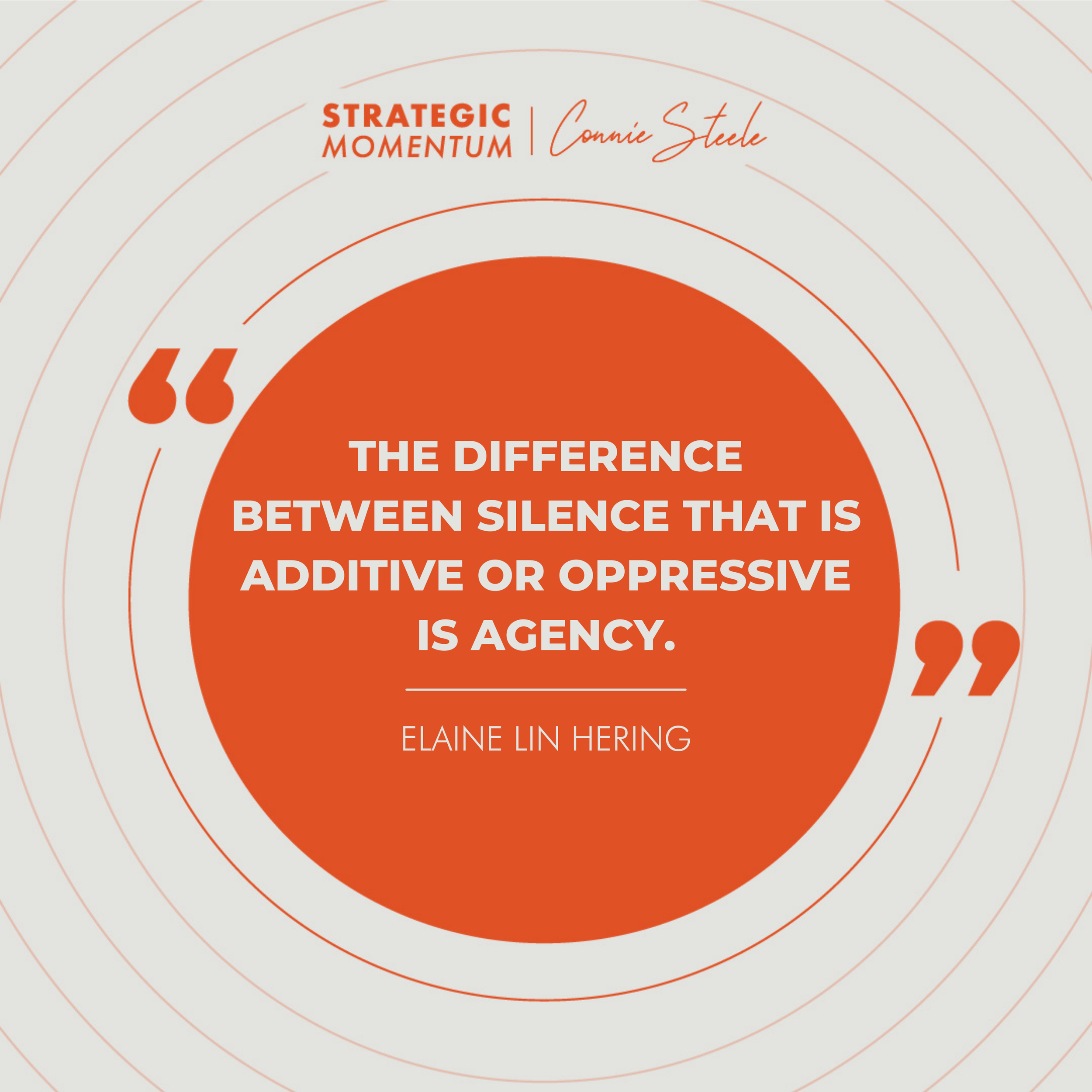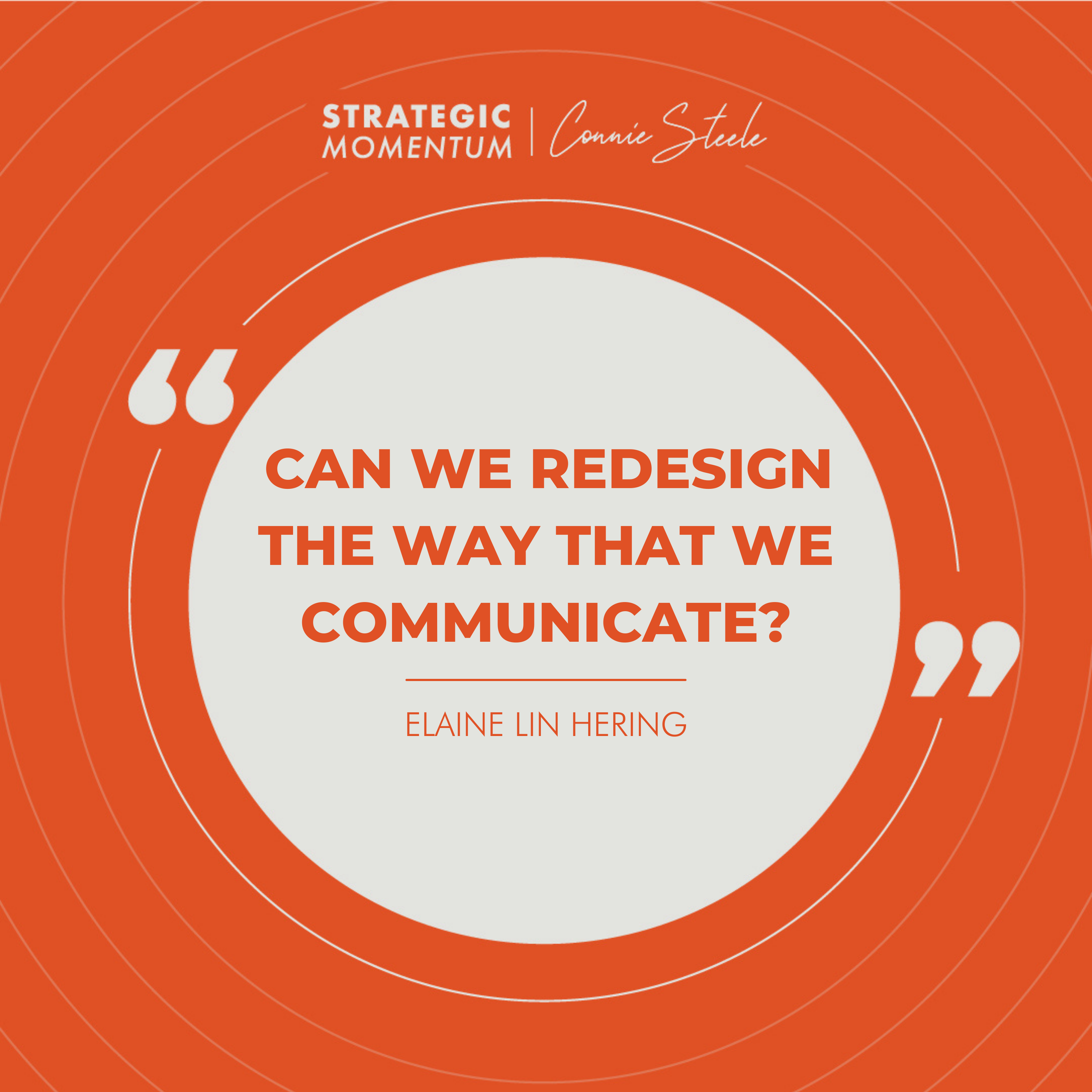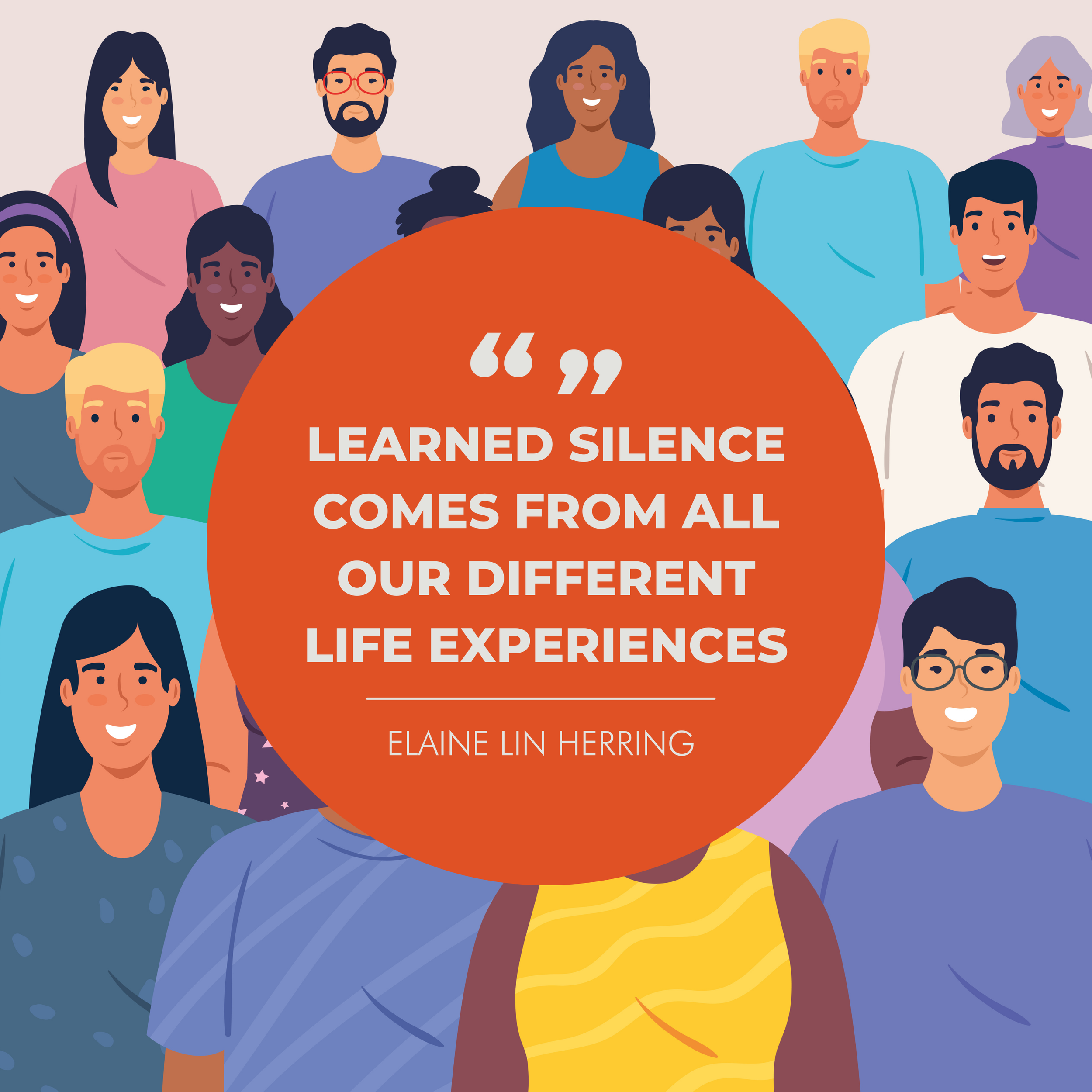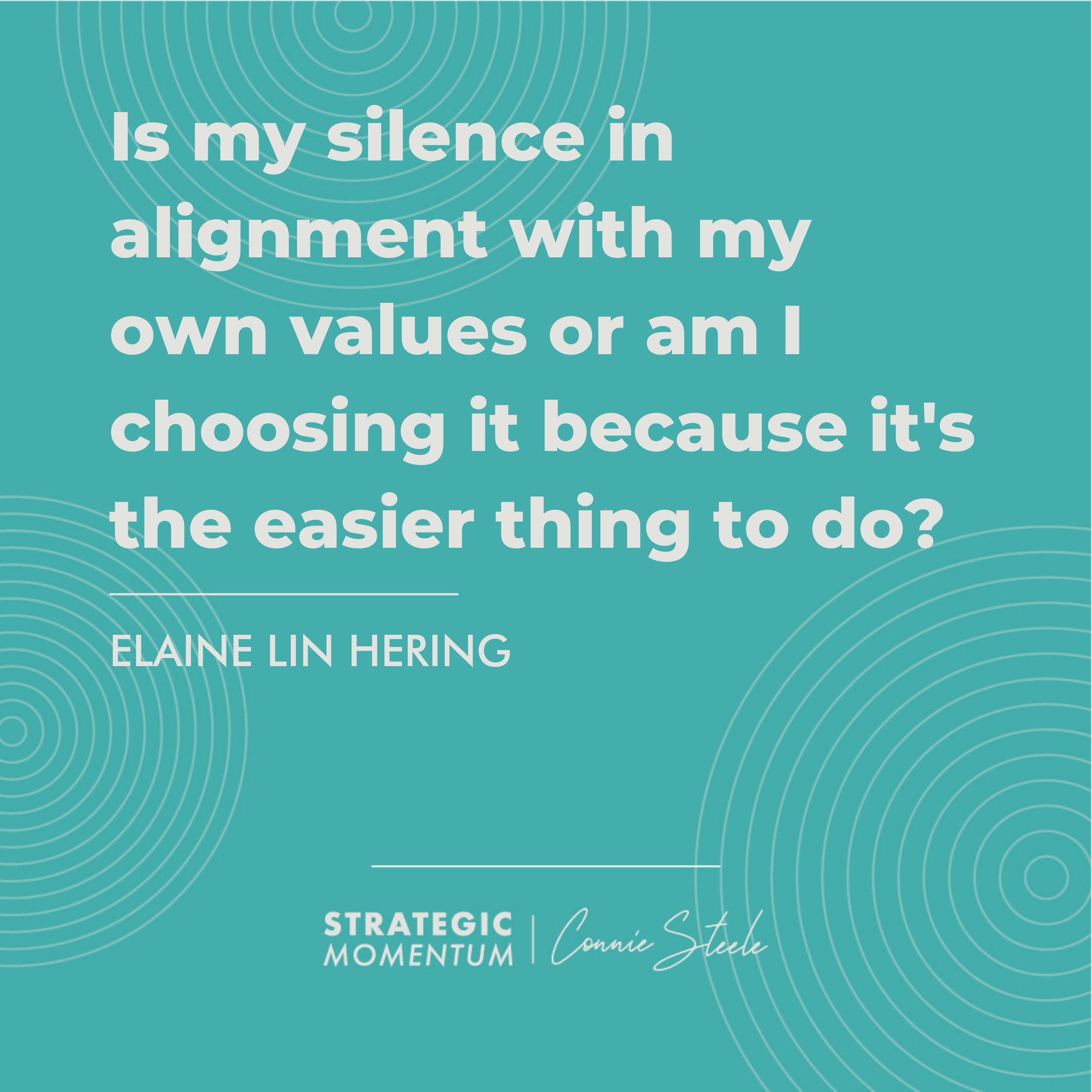Ep. 147 - Unlearning Silence: Transforming Unconscious Inaction into Conscious Action - with Elaine Lin Hering
Find Us Wherever You Listen To Podcasts
Today’s conversation feels really important, and it’s a topic that really struck a chord with me personally.
Elaine Lin Hering’s book — “Unlearning Silence: How to Speak Your Mind, Unleash Talent, and Live More Fully” — really gets to the heart of how and why so many of us feel stuck in our careers and life, as well as the internal and external forces that perpetuate this feeling.
And perhaps even more importantly, Elaine shares how we can start to move forward by identifying the unconscious actions — or inaction — that drive so many behaviors, both individually and collectively, so that we can start to make conscious choices to change our experiences, careers, and organizations to better empower everyone.
Defining Silence
When Elaine talks about silence, she is referring to “the silence when there's not enough room in the conversation, in the meeting, for your real thoughts, opinions, preferences.”
She says, “It's when you're not invited and you didn't think you could ask. It's when you feel like you have to edit out yourself or hide parts of yourself because your true self isn't welcome. So to me, the difference between silence that is additive or oppressive is agency: do I get to choose or am I being silenced?”
This experience is magnified by identities attached to gender, race, class, education, etc. So unlearning silence first requires bringing awareness to “the assumptions and messages that we might have internalized over time about who gets to speak and whose voice matters, which is of course really who matters in the world.”
What of those assumptions still serve me and the person I wanna become? What of those might have been part of my history, my family of origin, my upbringing, my education? What has become normalized? How do we peel back the layers of what we've become, what we've internalized, what we've perpetuated?
To unlearn silence, we have to be really honest about that and intentional about choosing our way forward.
Three Lenses for Analyzing Silence
Lens 1: In what ways might I be silencing myself?
This is chapter four of the book, and it’s about looking at the ways that you might be self-censoring — identifying when there is a disconnect between what you really think and what you communicate, and whether that’s serving the person you want to become.
And this is an area where we have greater ownership and opportunity to grow.
Lens 2: In what ways are other people silencing me?
Elaine intends for “Unlearning Silence” to be an invitation to well-intentioned leaders. Most leaders don’t say to themselves, “I am trying to silence my people,” but the reality is that many of their unconscious actions and the structures within organizations still have this effect.
Chapter five of the book addresses how we can each take responsibility for the ways that we might be silencing the people around us.
One example is bringing awareness to how people prefer to communicate or better receive communication, and setting the expectation that these different forms of communication are valid. Someone might communicate more effectively in text than verbally in a meeting, but that doesn’t make their contributions less valuable.
However, corporate America tends to prioritize and promote the people who can speak a certain way, who can sum everything up in three succinct bullet points, but then our organizations are only actually supporting once type of voice and asking everyone to fit into that mold. And we lose so much from flattening the diverse perspectives and insights that people have when we do this.
But we have the opportunity to redesign the way that we communicate, or at least interrogate the impacts of the patterns we have — because when we don’t intentionally design our communication flows, they tend to default to the people in power and what serves them.
Lens 3: Who do our policies and practices support? Who do they silence? Is there alignment with what we say we're going to do and what we're actually doing in practice?
For example, we’ve been talking about returning to the office for so long now, but who does that policy support? It tends to support the people who have developed their leadership and communication skills for in-person collaboration.
Who does it silence? The people who have long commutes, or that their life at home only works if they can get dinner started before their last meeting, or who can’t physically access an office building easily or safely. And there's a lot of friction there. But we can’t truly unlearn silence without taking a really honest look at the ways our policies and practices do and don’t support people. And more importantly, addressing what we can change to support more people.
Definition of Success:
“My current definition of success is staying sane, and moving through the world with kindness and grace for myself and the people around me.”
Key Takeaways:
Elaine Lin Hering defines silence as “when there's not enough room in the conversation, in the meeting, for your real thoughts, opinions, preferences.”
We learn to silence ourselves on an individual, structural, organizational, social, and interpersonal level. From our early childhood to late in our careers, so many of us are learning that we can’t or shouldn’t be part of the conversation.
Unlearning silence first requires bringing awareness to “the assumptions and messages that we might have internalized over time about who gets to speak and whose voice matters, which is of course really who matters in the world.”
Everyone has a different relationship with silence and how we have learned silence comes from all those different life experiences we’ve acquired. And for those who carry subordinate identities for whom their voice isn’t the norm, they are more likely to silence themselves and be silenced.
When we silence ourselves, this can lead to self-doubt and social isolation so it’s important to have the conversation with others and be clear about the role you want them to play - are you looking for them to just listen to you or be a thought partner to help you fill in the blank?
Learning silence limits who can contribute to the organizations they work within, as well as what they can contribute.
It is critical that leaders really consider how they personally silence people, often unconsciously, and who the structures within their organizations actually support.
Silence isn’t necessarily bad. Sometimes it’s needed for self-care and management depending on the situation. Only you can make that decision on when it makes sense or to have agency over the circumstance.
We have an opportunity to redesign the way that we communicate, but we have to bring awareness to what we’re doing now first.
Resources
Learn more at https://elainelinhering.com/
Read “Unlearning Silence:” https://elainelinhering.com/book/
Instagram: https://www.instagram.com/elainelinhering/












